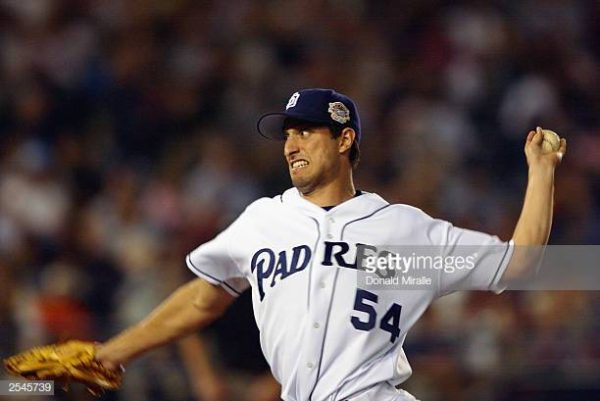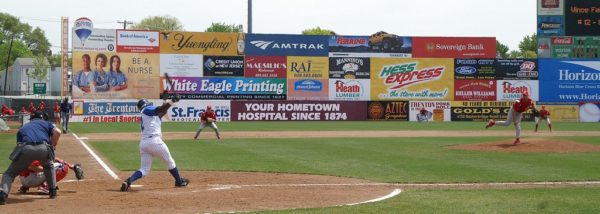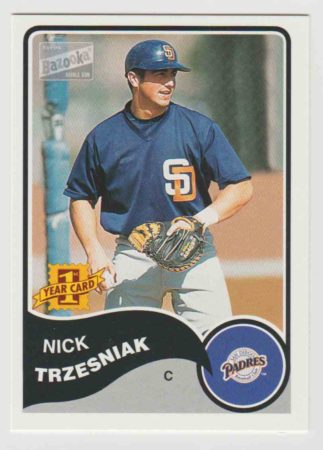The sad reality of the San Diego Padres’ 1999 draft

Taking a look back at the 1999 San Diego Padres’ draft in which the team had six picks in the first round.
The San Diego Padres have had a horrible past when it comes to their draft selections.
The team continually fails to draft and develop quality major league talent, especially hitters. This continued failed attempt to draft talent has stunted the growth of the franchise and resulted in mediocre major league teams. There is no debating this. Things have changed of recent, as A.J. Preller has had several picks reach Petco Park early in their professional careers. The Padres appear to be finally capable of cultivating major league players. And that is a good thing.
Drafting baseball players is not an exact science. There are many intangibles to a player that can not be seen with numbers and stats. You never really know if a man will develop. Sometimes they just have to play. There are plenty of stories of first-round pick busts, and late-round pick steals throughout the years. The majority of the time, it all evens out for a franchise, but the Padres have historically made bad decision after bad decision when it comes to draft picks.
The following is the story of the 1999 MLB draft.
After the World Series run of the 1998 San Diego Padres, the team was forced to let a trio of players walk away via free agency. Steve Finley, Ken Caminiti, and Kevin Brown were the heart and soul of the Padres team. Losing those three was difficult for the franchise, and the team was granted five extra picks in the first round of the draft to even out the competitive balance of the league. The Padres were awarded the 20th, 28th, 29th, 41st, 49th, and 51st pick in the first round of the 1999 draft. With six picks within the first 51 players, the Padres had an excellent opportunity to stock the farm system an build for the future.
Losing Brown, their ace, was the most significant loss of all. Not only the fact he went to the rival Los Angeles Dodgers, in the richest pitchers’ contract in history, but the cost of Kevin Brown the previous season was especially steep to the Friars. Derrek Lee was easily one of the best position players drafted by the Padres in the last 25 years. Lee was traded to the Marlins for one-year service of Kevin Brown. Though the Padres lost a decent prospect in Derek Lee, the rewards of Kevin Brown made it all worth while.

With their first pick in 1999, the Padres drafted a speedy high school outfielder out of Georgia by the name of Vince Faison. He was a left-handed hitter who was considered a high-ceiling pick but with some risk. To use the 20th pick on a project player was risky, but the team had five other selections in the next 30 picks. Faison never ended up playing higher than Triple-A (Only 30 at-bats in 2004 at Tacoma with the Mariners organization) and retired after nine minor league seasons in 2008. Faison walked away with a .251/.323/.407 minor league batting line and a .704 OPS. The left-handed outfielder hit 76 home runs while driving in 395 runs in over 3,100 at-bats. He also stole 125 bases in the minors. Faison is most surely a bust pick for the Padres.
With the second pick in the round and the 28th overall, the team selected a high school pitcher out of the state of Washington. Gerik Baxter was a right-handed pitcher who had great potential. He was tragically killed in 2001 in an automobile accident just outside of Lake Elsinore. Baxter was rehabbing an elbow injury at the time, but the young pitcher had a lot of upside. He was listed as the Padres #5 prospect at the time of the accident. Baxter ended up having a career record with a 10-6 record and a 3.19 ERA in the minors. He had a fantastic year in 2000 for Fort Wayne going 5-6 with a 3.40 ERA while striking out 103 batters in 100.2 innings pitched. Jake Peavy was a year younger than Baxter in the Padres system and is known to have had a great admiration for the pitcher. Gerik Baxter could have been extraordinary; his loss was difficult for the team. The pitcher could have easily salvaged this horrendous draft for San Diego.

With the 29th pick in the first round, the team decided to go with another right-handed pitcher. Omar Ortiz was drafted out of the University of Texas-Pan American. He came from a small school in Texas, but Ortiz had impressive numbers in college. The pitcher was the third Padres’ selection in the first 29 picks, but none of the three would ever reach the major leagues. Omar Ortiz was traded with Matt Clement and Eric Owens for Mark Kotsay and Cesar Crespo at the end of the 2000 season. He never made it past High A-Ball for the Marlins and retired in 2003 with a 5.15 ERA in the minor leagues. A horrible selection again made by the team in a time where they needed results.
The next selection for the team would be the 41st pick in the draft. With that pick, the Padres again went with a right-handed pitcher. They took Casey Burns out of the University of Richmond. Burns, too, failed to make it to the major leagues, and he never made it passed Single A-Ball. He retired after three minor league seasons with a 5.08 ERA. Evaluating and cultivating talent was something the Padres sorely needed at this point in the history of the franchise. For these three men (exception of Baxter, who would have made it) to not even play at the Triple-A level, says a lot about the state of the team at the time.
Eight selections later and the Padres finally struck gold with their 49th pick (sarcasm). Left-handed pitcher Mike Bynum was selected out of the University of North Carolina, and he has the distinction of being the only player of the six total first-round picks to make it to the major leagues. Bynum played parts of three seasons for the San Diego Padres from 2002-2004. The left-handed relief specialist retired with a 7.73 ERA and a 1.734 WHIP in his major league career. He did not have much success, but at least he made it to the highest level in the game. First-round picks should at least be able to make it to the majors. Success cannot be guaranteed, but they should at least come close to the highest level of the game.
The Padres’ last first-round pick and the 51st pick in the draft was used on catcher Nick Trzesniak. The right-handed hitting catcher was drafted out of high school in Illinois. Trzesniak was very close to making it to the major leagues, and it is a shame he was never given the opportunity. He spent ten total years in the minor leagues and retired with a respectable batting line of .252/.328/.373. He hit 51 homers and drove in 291 runs. Trzesniak spent parts of four seasons in Triple-A for four different franchises (SD, TEX, FL, DET), but was never given the call.
The 1999 draft resulted in one player making it to the major leagues. The Baxter story is indeed tragic, and he could have made a difference in this draft. But the failures of this era of Padres baseball are profound and have led to a franchise suffering for an identity. Thankfully, this story looks to be a thing of the past as the Padres have had great success recently in bringing up young players to the major league level. They must not forget their past mistakes, though, or they are doomed to repeat it.
James was born and raised in America’s Finest City. He is a passionate baseball fan with even more passion towards his hometown Padres. Editor-In-Chief of EastVillageTimes.com. Always striving to bring you the highest quality in San Diego Sports News. Original content, with original ideas, that’s our motto. Enjoy.
The Padres major league team has been far from mediocre the past 10 years. The Diamondbacks have been mediocre. The Padres have been pathetic.
To be fair, that was a horrible draft class. Of all the players taken in the first 2 rounds after the Padre’s first selection, they only missed on getting Brian Roberts (ss) Baltimore and Carl Crawford (of) Tampa Bay. The few good ones were at the very top of the class and Padres did not have a chance to draft them.